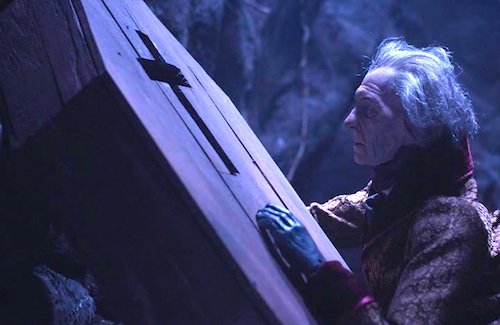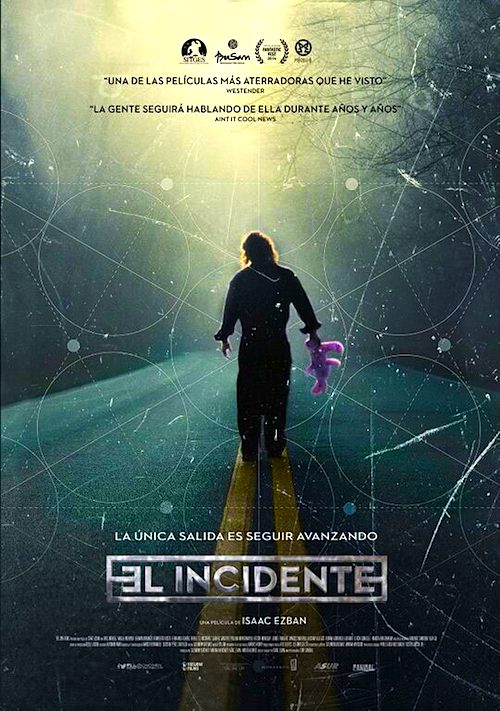By Joe Bendel. If you grew up in the 1980s, you remember when 3D was considered a tacky down-market gimmick. Local stations used to distribute cardboard red-and-blue glasses for the “special” weekend 3D “extravaganzas.” Thanks to the anaglyphic process it employed, Julian Roffman’s weird tale looked relatively presentable when broadcast on television. It also happens to be considered the very first Canadian horror movie (and one of the few not starring Stephen McHattie). Acting out of patriotic duty, TIFF spearheaded and premiered a loving restoration of Roffman’s cult favorite, The Mask, which screens this weekend at Anthology Film Archives.
Archeologist Michael Radin has just stalked and murdered a young woman while under the influence of a sinister ritual mask. Perhaps it was a dream, but don’t count on it. Regardless, the mask is tearing apart his soul and unhinging his mind. His new shrink, Dr. Allan Barnes is no help, because he assumes Radin’s obsession with the mask is just a symptom of a larger issue, as most psychologists would. However, Radin shows him just how wrong he was by mailing him the mask just before committing suicide.
Naturally, Barnes sticks the ominously evil but not particularly comfortable looking mask on his head, at which point he gets the first of several massively bad trips, for which the film kicks into 3D gear (the more “grounded” parts being conventional 2D). Filled with surreal, more than slightly outré images of skulls, death’s heads, floating eyeballs, temptresses, and sacrificial altars, these hallucinatory interludes are arguably well ahead of their time. They are nearly as memorable as the dream sequences in Rosemary’s Baby and Spellbound (which were a collaboration between Hitchcock and Dalí).
 Needless to say, the good doctor is not himself from this point on. His faithful fiancé and mentor will try to save him, but he is obsessed with the mask’s power to tap into the human subconscious. Unfortunately, his torch-carrying secretary is most at risk from his violent, mask-dominated new persona.
Needless to say, the good doctor is not himself from this point on. His faithful fiancé and mentor will try to save him, but he is obsessed with the mask’s power to tap into the human subconscious. Unfortunately, his torch-carrying secretary is most at risk from his violent, mask-dominated new persona.
The Mask might not necessarily be scary, but it is still weird as all get out. Barnes’ feverish visions while wearing the mask have lost none of their what-the-heck power. They are just bizarre. Although they are credited to Serbian expatriate filmmaker and montage-specialist Slavko Vorkapich, his concepts were so prohibitively over-the-top, Roffman had to devise the more practical and macabre phantasms that torment Dr. Barnes. Yet, somehow he was able to tap into something way out there and deeply messed up.
As an added bonus, the acting is not bad. Paul Stevens, who convincingly loses his marbles as Dr. Barnes, would have notable roles in Patton, Advise & Consent, and Exodus, in addition to about a jillion TV guest appearances. Future director Martin Lavut is also spectacularly snide and antisocial as the imploding Radin. But wait, there’s more, including legendary PR huckster Jim Moran claiming to be a mask collector while serving as the film’s Criswell in the hyperbolic cold intro.
Whether you classify it as horror, dark fantasy, or a psychological thriller, The Mask could easily sustain dozens of film studies theses. This is how 3D was meant to be—deliriously nutty. If you haven’t caught up with it yet, its mini-run at Anthology is the perfect opportunity. Highly recommended for cult film fans, it screens this Friday, Saturday, and Sunday (1/15-1/17).
LFM GRADE: B+
Posted on January 13th, 2016 at 12:43pm.




